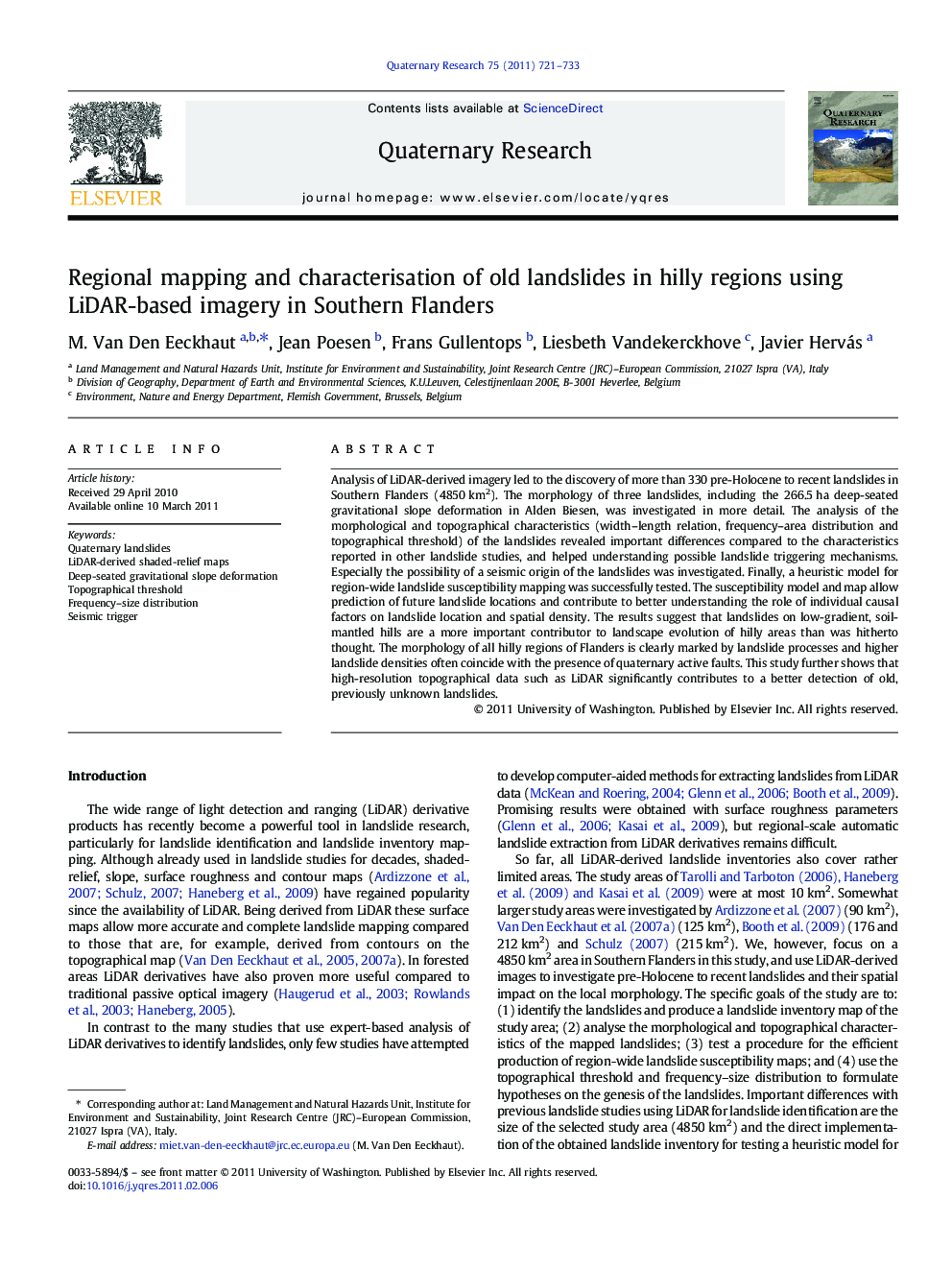| Article ID | Journal | Published Year | Pages | File Type |
|---|---|---|---|---|
| 1045842 | Quaternary Research | 2011 | 13 Pages |
Analysis of LiDAR-derived imagery led to the discovery of more than 330 pre-Holocene to recent landslides in Southern Flanders (4850 km2). The morphology of three landslides, including the 266.5 ha deep-seated gravitational slope deformation in Alden Biesen, was investigated in more detail. The analysis of the morphological and topographical characteristics (width–length relation, frequency–area distribution and topographical threshold) of the landslides revealed important differences compared to the characteristics reported in other landslide studies, and helped understanding possible landslide triggering mechanisms. Especially the possibility of a seismic origin of the landslides was investigated. Finally, a heuristic model for region-wide landslide susceptibility mapping was successfully tested. The susceptibility model and map allow prediction of future landslide locations and contribute to better understanding the role of individual causal factors on landslide location and spatial density. The results suggest that landslides on low-gradient, soil-mantled hills are a more important contributor to landscape evolution of hilly areas than was hitherto thought. The morphology of all hilly regions of Flanders is clearly marked by landslide processes and higher landslide densities often coincide with the presence of quaternary active faults. This study further shows that high-resolution topographical data such as LiDAR significantly contributes to a better detection of old, previously unknown landslides.
